Iman Tavakkolnia
A Comprehensive Comparison between Terahertz and Optical Wireless Communications
Mar 29, 2025



Abstract:This paper presents a comprehensive quantitative comparison between Terahertz (THz) communication (TeraCom) and optical wireless communication (OWC) technologies, focusing on both indoor and outdoor environments. We propose a comparison method for TeraCom and vertical-cavity surface-emitting laser (VCSEL)-based OWC in indoor scenarios, incorporating misalignment effects by modeling the THz antenna radiation pattern within a multi-ray THz channel model and using a Gaussian beam model for VCSEL-based OWC. Unified beamwidth parameters allow for a detailed analysis of misalignment impact on both systems. Furthermore, we develop power consumption models for each technology, integrating key parameters such as THz phase noise, VCSEL non-linearities, and photodetector bandwidth-area tradeoffs. These models enable an in-depth analysis of energy efficiency in indoor environments, including multi-transmitter coverage scenarios. For outdoor scenarios, we summarize existing stochastic channel models addressing path loss, pointing errors, and small-scale fading for free space optics (FSO) and THz links. We then apply these models to unmanned aerial vehicle (UAV) applications to assess performance in dynamic conditions. Our results provide critical insights into the suitability of each technology for various deployment scenarios.
Optical Wireless Communications: Enabling the Next Generation Network of Networks
Dec 21, 2024



Abstract:Optical wireless communication (OWC) is a promising technology anticipated to play a key role in the next-generation network of networks. To this end, this paper details the potential of OWC, as a complementary technology to traditional radio frequency communications, in enhancing networking capabilities beyond conventional terrestrial networks. Several usage scenarios and the current state of development are presented. Furthermore, a summary of existing challenges and opportunities are provided. Emerging technologies aimed at further enhancing future OWC capabilities are introduced. Additionally, value-added OWC-based technologies that leverage the unique properties of light are discussed, including applications such as positioning and gesture recognition. The paper concludes with the reflection that OWC provides unique functionalities that can play a crucial role in building convergent and resilient future network of networks.
AI-Native Multi-Access Future Networks -- The REASON Architecture
Nov 25, 2024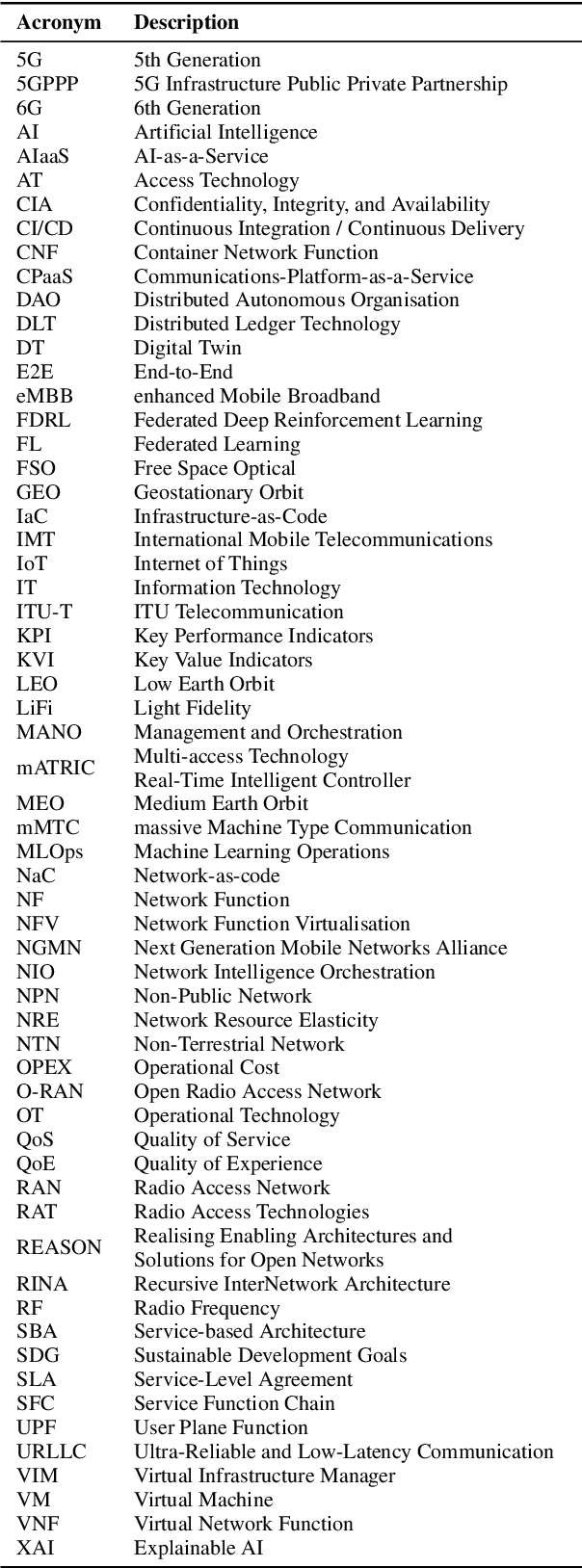

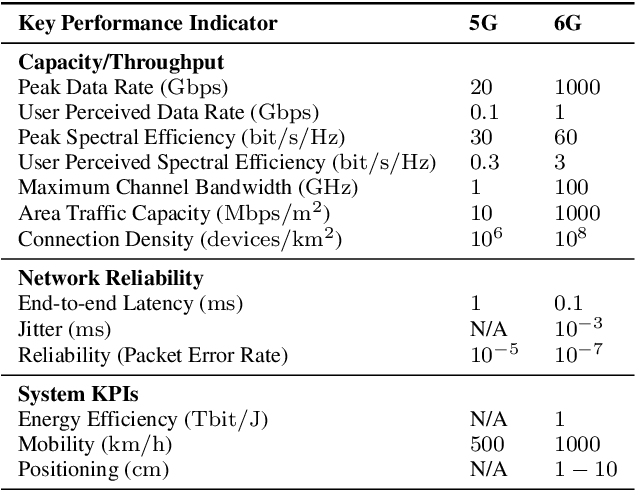
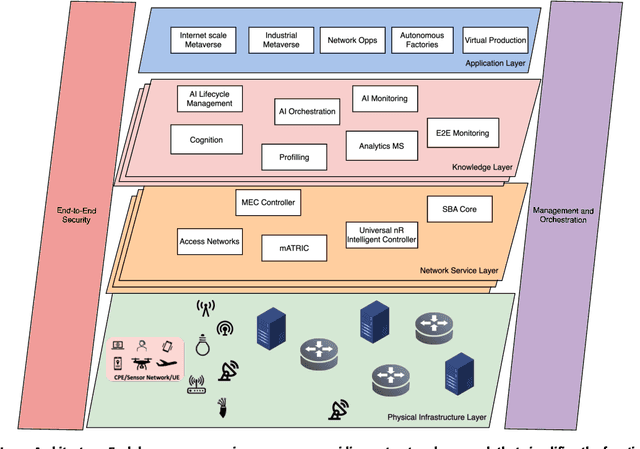
Abstract:The development of the sixth generation of communication networks (6G) has been gaining momentum over the past years, with a target of being introduced by 2030. Several initiatives worldwide are developing innovative solutions and setting the direction for the key features of these networks. Some common emerging themes are the tight integration of AI, the convergence of multiple access technologies and sustainable operation, aiming to meet stringent performance and societal requirements. To that end, we are introducing REASON - Realising Enabling Architectures and Solutions for Open Networks. The REASON project aims to address technical challenges in future network deployments, such as E2E service orchestration, sustainability, security and trust management, and policy management, utilising AI-native principles, considering multiple access technologies and cloud-native solutions. This paper presents REASON's architecture and the identified requirements for future networks. The architecture is meticulously designed for modularity, interoperability, scalability, simplified troubleshooting, flexibility, and enhanced security, taking into consideration current and future standardisation efforts, and the ease of implementation and training. It is structured into four horizontal layers: Physical Infrastructure, Network Service, Knowledge, and End-User Application, complemented by two vertical layers: Management and Orchestration, and E2E Security. This layered approach ensures a robust, adaptable framework to support the diverse and evolving requirements of 6G networks, fostering innovation and facilitating seamless integration of advanced technologies.
Spatial and Wavelength Division Joint Multiplexing System Design for Visible Light Communications
Sep 20, 2022
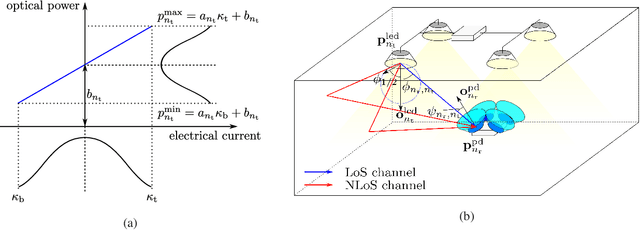
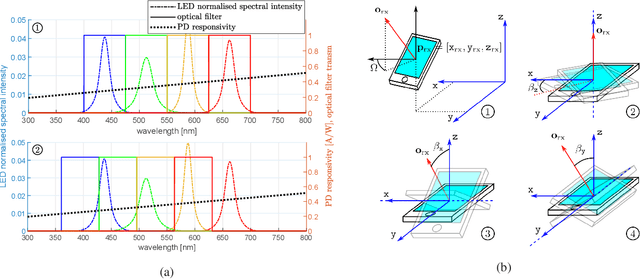

Abstract:The low-pass characteristics of front-end elements including light-emitting diodes (LEDs) and photodiodes (PDs) limit the transmission data rate of visible light communication (VLC) and Light Fidelity (LiFi) systems. Using multiplexing transmission techniques, such as spatial multiplexing (SMX) and wavelength division multiplexing (WDM), is a solution to overcome bandwidth limitation. However, spatial correlation in optical wireless channels and optical filter bandpass shifts typically limit the achievable multiplexing gain in SMX and WDM systems, respectively. In this paper, we consider a multiple-input multiple output (MIMO) joint multiplexing VLC system that exploits available degrees-offreedom (DoFs) across space, wavelength and frequency dimensions simultaneously. Instead of providing a new precoder/post-detector design, we investigate the considered joint multiplexing system from a system configuration perspective by tuning system parameters in both spatial and wavelength domains, such as LED positions and optical filter passband. We propose a novel spatial clustering with wavelength division (SCWD) strategy which enhances the MIMO channel condition. We propose to use a state-of-the-art black-box optimization tool: Bayesian adaptive direct search (BADS) to determine the desired system parameters, which can significantly improve the achievable rate. The extensive numerical results demonstrate the superiority of the proposed method over conventional SMX and WDM VLC systems.
Adaptive Target-Condition Neural Network: DNN-Aided Load Balancing for Hybrid LiFi and WiFi Networks
Aug 09, 2022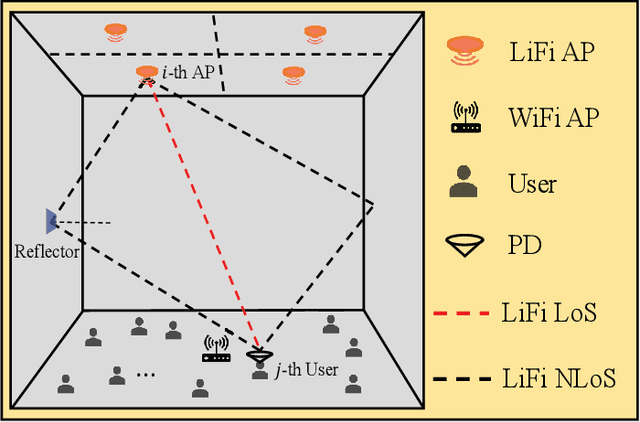
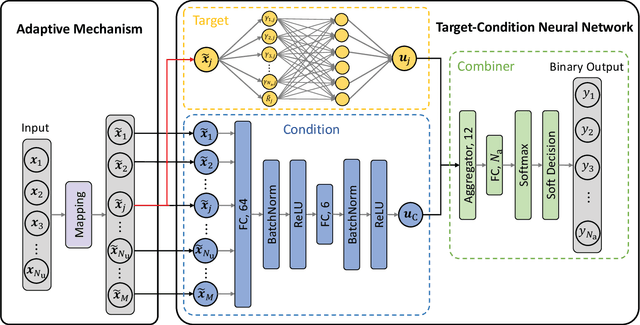
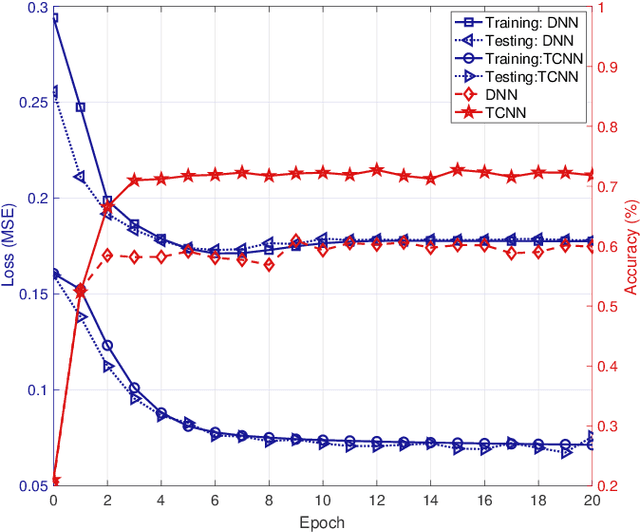
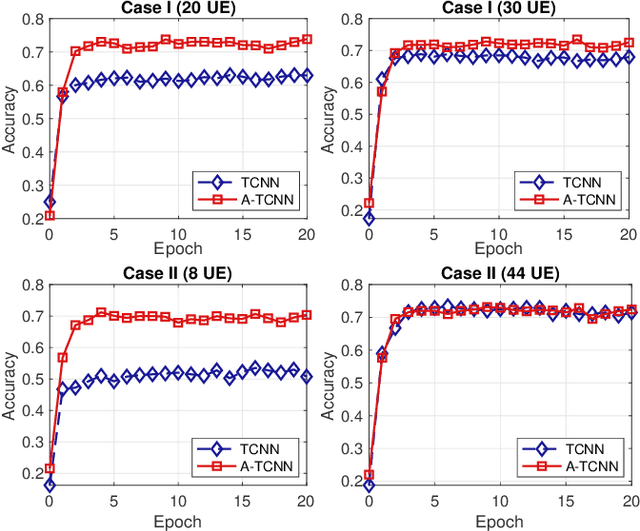
Abstract:Load balancing (LB) is a challenging issue in the hybrid light fidelity (LiFi) and wireless fidelity (WiFi) networks (HLWNets), due to the nature of heterogeneous access points (APs). Machine learning has the potential to provide a complexity-friendly LB solution with near-optimal network performance, at the cost of a training process. The state-of-the-art (SOTA) learning-aided LB methods, however, need retraining when the network environment (especially the number of users) changes, significantly limiting its practicability. In this paper, a novel deep neural network (DNN) structure named adaptive target-condition neural network (A-TCNN) is proposed, which conducts AP selection for one target user upon the condition of other users. Also, an adaptive mechanism is developed to map a smaller number of users to a larger number through splitting their data rate requirements, without affecting the AP selection result for the target user. This enables the proposed method to handle different numbers of users without the need for retraining. Results show that A-TCNN achieves a network throughput very close to that of the testing dataset, with a gap less than 3%. It is also proven that A-TCNN can obtain a network throughput comparable to two SOTA benchmarks, while reducing the runtime by up to three orders of magnitude.
 Add to Chrome
Add to Chrome Add to Firefox
Add to Firefox Add to Edge
Add to Edge